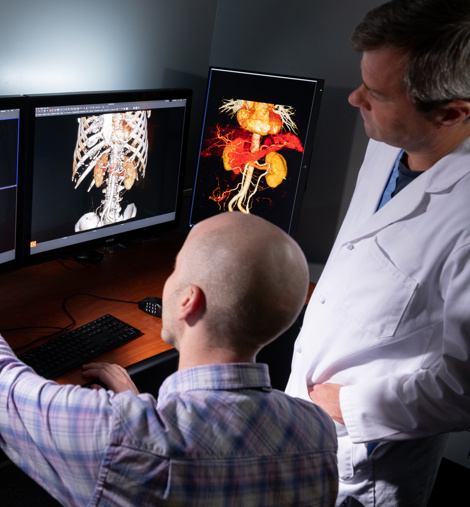Guidelines and Statements
High-quality outcomes and patient safety
A framework of evidence-based clinical practice documents to ensure patient safety and enhance the delivery of patient care.

Methodology
The methodology for Guidelines and Statements helps create impactful documents that highlight the quality of evidence used to derive recommendations.
Ablation
Ablation therapy is a procedure doctors use to destroy abnormal tissue that can be present in many conditions.
Continuous education
TBA
Diagnostic
TBA
Embolization
Embolization may be used to treat fibroids, pelvic veins, enlarged prostate, varicoceles and other conditions. It usually refers to a procedure in which medical materials or devices are placed into a blood vessel to temporarily or permanently stop bleeding.
General Imaging
TBA
Hepatic/Portal
TBA
Intervention
TBA
Interventional Oncology
TBA
IVC filter
IVC filter placement is a preventative tool placed inside a huge vein in the abdomen called the inferior vena cava to trap any blood clots that may break free from the veins in the legs and potentially reach the heart or the lungs. An IVC filter is one of the many treatments used to prevent a pulmonary embolism (a blood clot that travels to the lungs) and should only be placed in patients that cannot receive blood thinners or in patients in whom blood thinning treatment has failed.
Mens Health
Interventional radiologists may treat an enlarged prostate, and alleviate its worrisome symptoms, by blocking blood flow to the prostate (causing it to shrink), using a technique called embolization. They also use the same technique to reduce the swelling and pain associated with enlarged veins in the scrotum called varicoceles.
Musculoskeletal (MSK)
Musculoskeletal (bones, joints, spine)
Neurointerventional Radiology
TBA
Non-vascular Interventions
TBA
Operations and management
TBA
Pediatric
Pediatric interventional radiologists (PIRs) are specially trained to deliver minimally invasive care to infants, children and teenagers. The treatments they deliver carry less risk, less pain and less recovery time than traditional surgery.
Peripheral Arterial
PAD happens when arteries in the legs narrow, reducing or cutting off blood flow, and is a leading cause of non-trauma related amputations when not diagnosed and treated early.
Practice development
TBA
Pre/post procedural care and assessment
Pre/post procedural care and assessment refers to the medical evaluation and care provided to a patient both before and after a medical procedure, which involves assessing their health status, preparing them for the procedure, and monitoring their recovery afterwards to identify any complications and ensure proper healing
Quality improvement
Quality Improvement
Renal
Renal
Safety
TBA
SIR policies
TBA
Standards and guidelines
Standards and Guidelines
Stenting
Stenting is the placement of a woven tube covered by a metal mesh at the site of weakness to reinforce the arterial wall. Device placement is done with the help of a catheter which is inserted through the groin under real-time X-ray. Stent grafts are metallic stents covered by graft material and often used to treat an enlarged aorta in an abdominal aortic aneurysm.
Thoracic/Abdominal
TBA
Thrombolysis
Thrombolysis treats vascular blockages and improves blood flow by dissolving abnormal blood clots. A blood clot, or thrombus, can block off blood supply to certain parts of the body and cause serious damage. During catheter-directed thrombolysis, the physician uses X-ray imaging and a catheter to guide special medication or a medical device to the site of a blood clot to dissolve the blockage, to remove it and to prevent the vein or artery from becoming permanently blocked and restricting blood flow to a limb or organ.
Vascular Malformation
TBA
Venous
TBA
Women in IR
For all women in interventional radiology.
Womens Health
Interventional radiologists treat a variety of conditions for women including uterine fibroids, infertility, chronic pelvic pain and varicose veins
Subcategories
Appropriate use criteria
Appropriate use criteria
Clinical practice guideline
Provide recommendations about benefits and drawbacks of different care options intended to optimize patient care.
Collaboration and endorsements
Consensus documents
Provide guidance from experts in the clinical area.
Position Statement
Practice parameters
Practice parameters
Quality improvement
Research reporting standards
Define a set of vocabulary for processes and outcomes to standardize comparison of data across multiple studies.
Show document types
No results found

